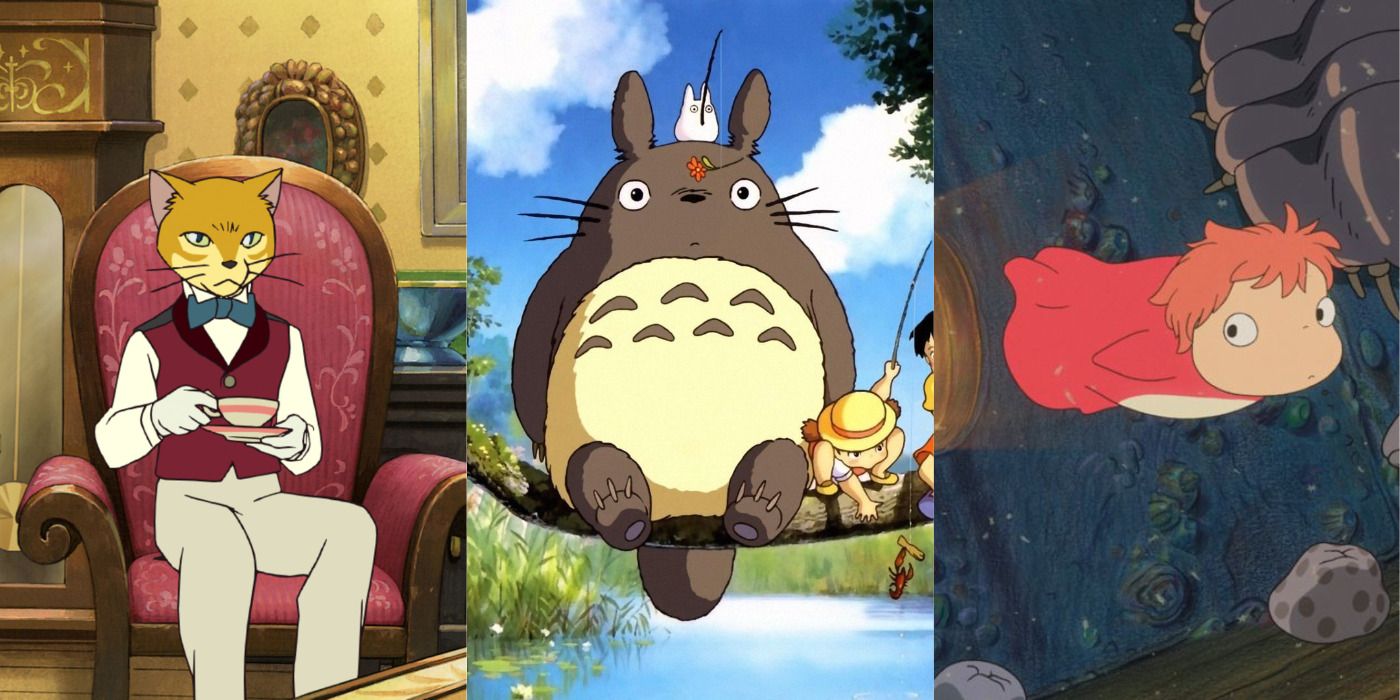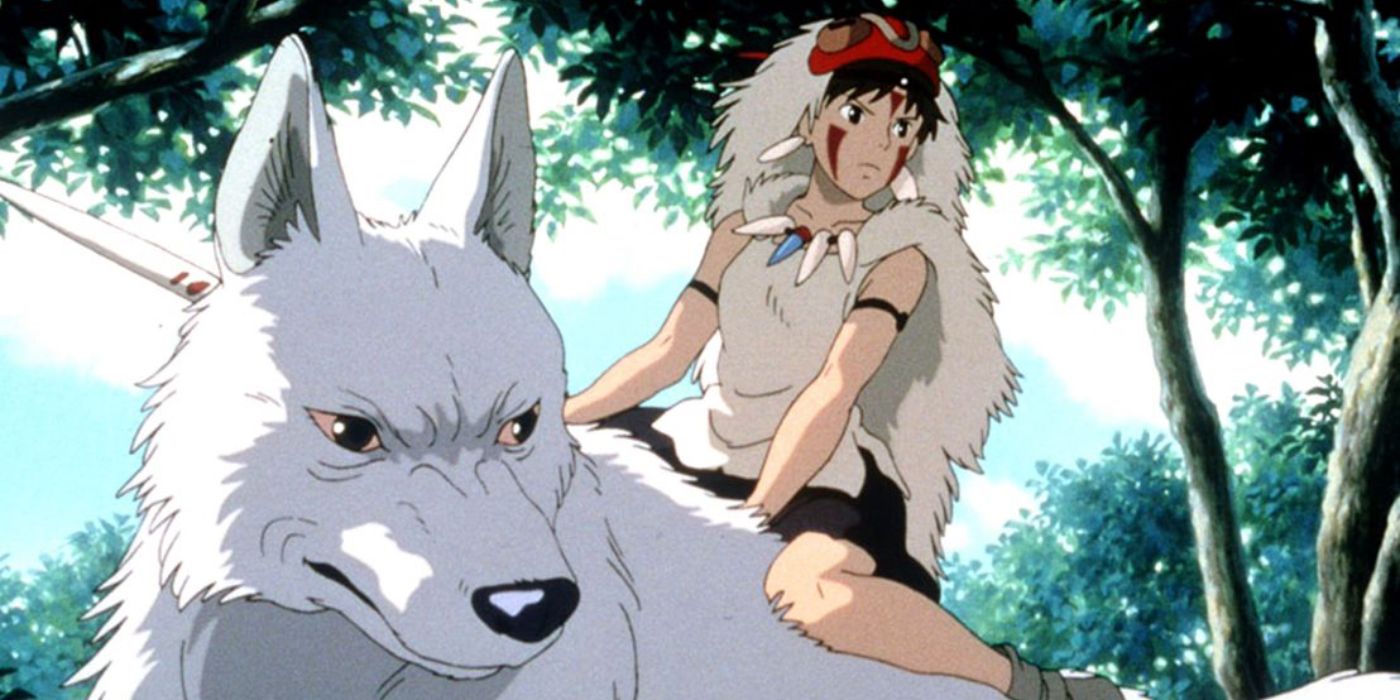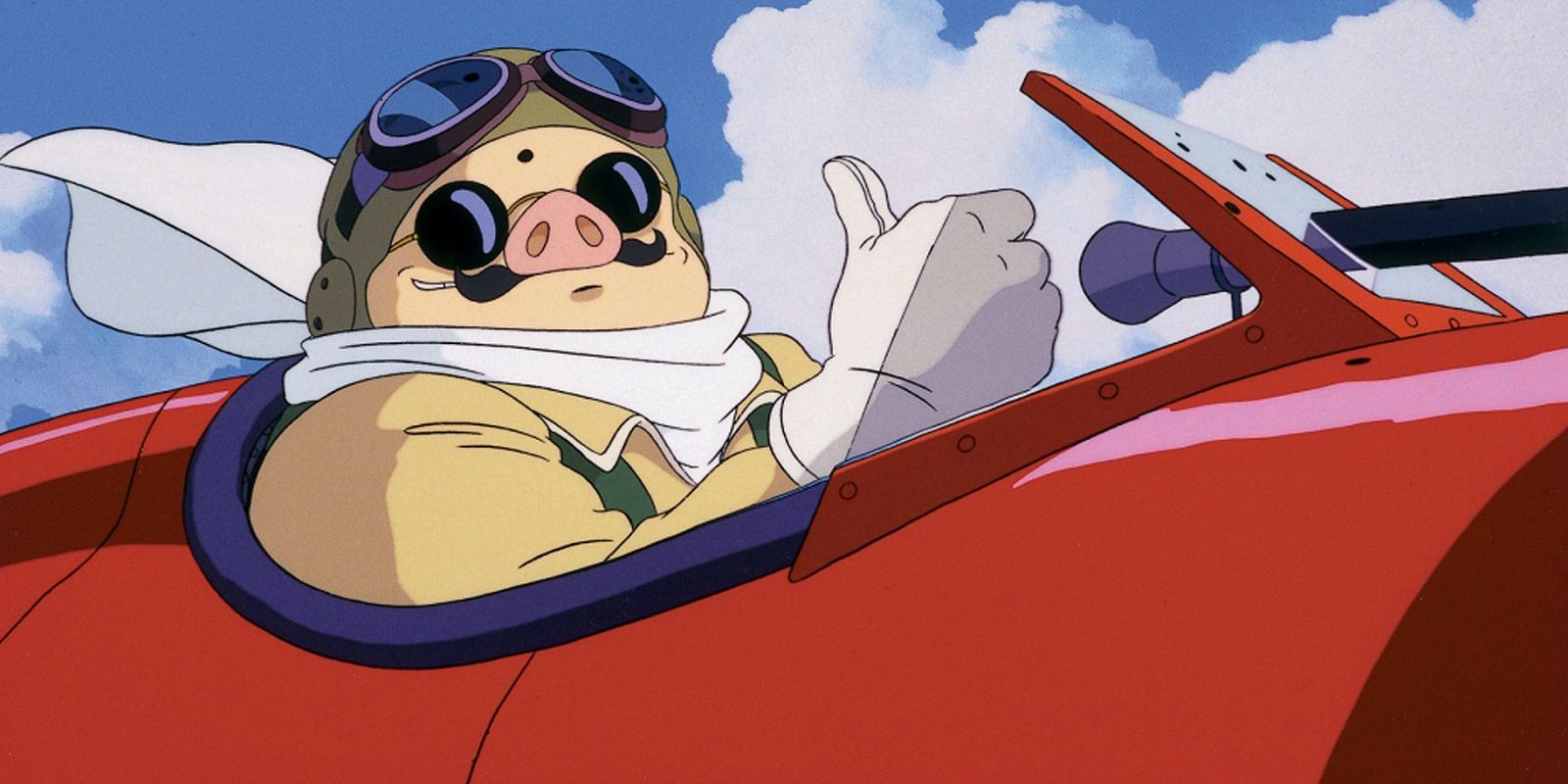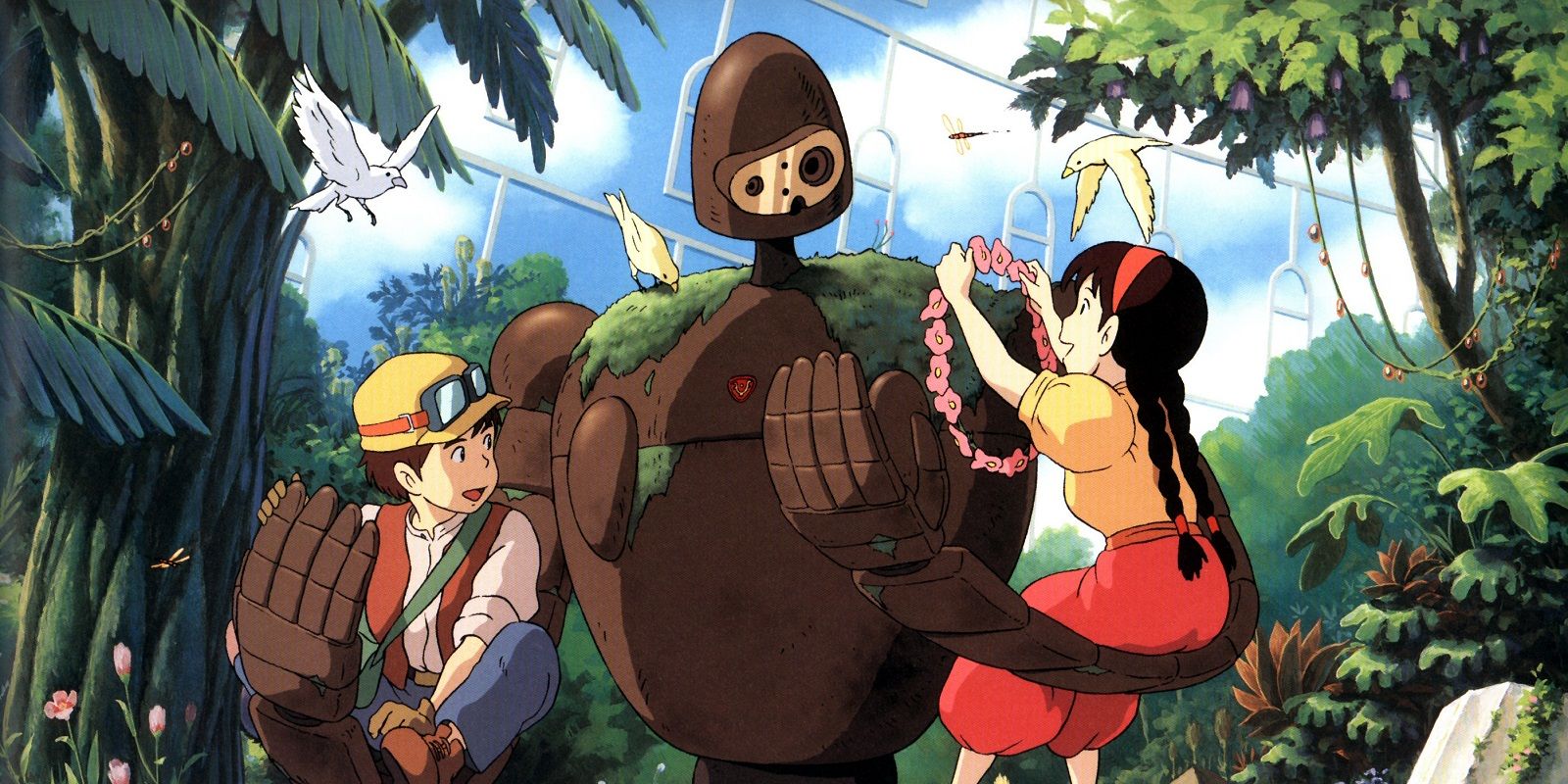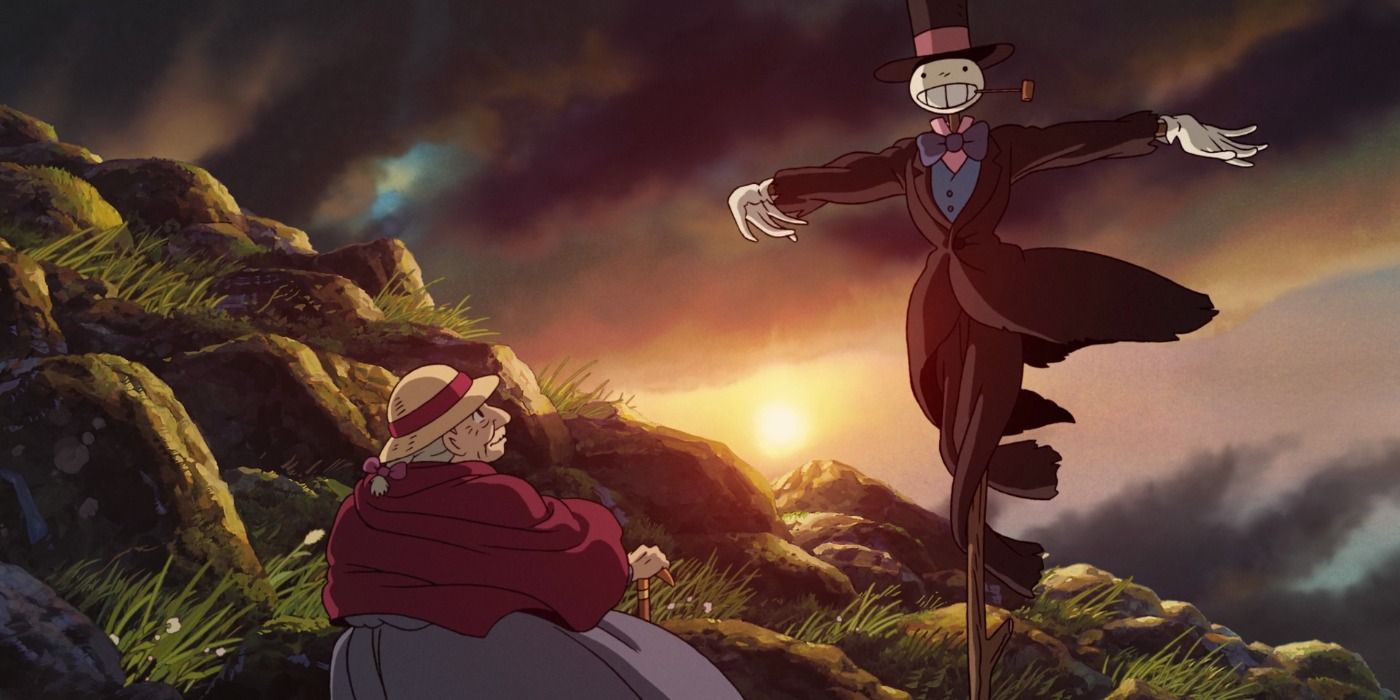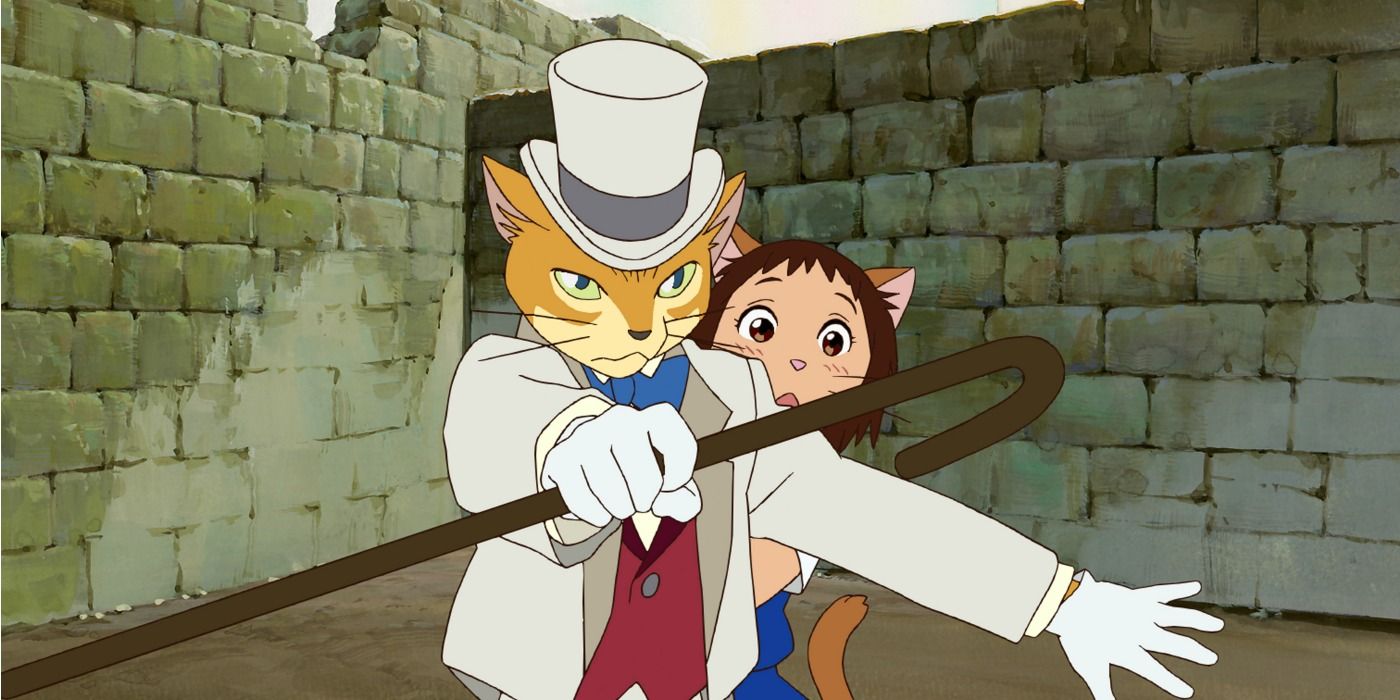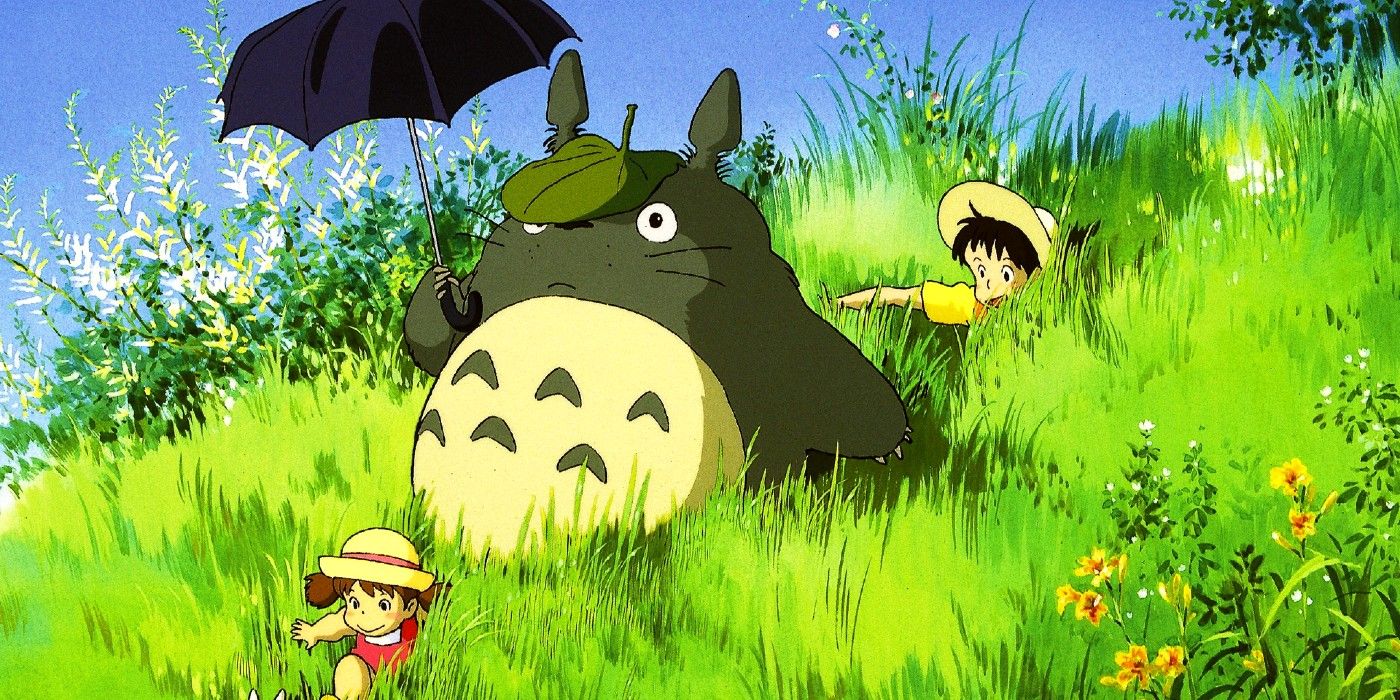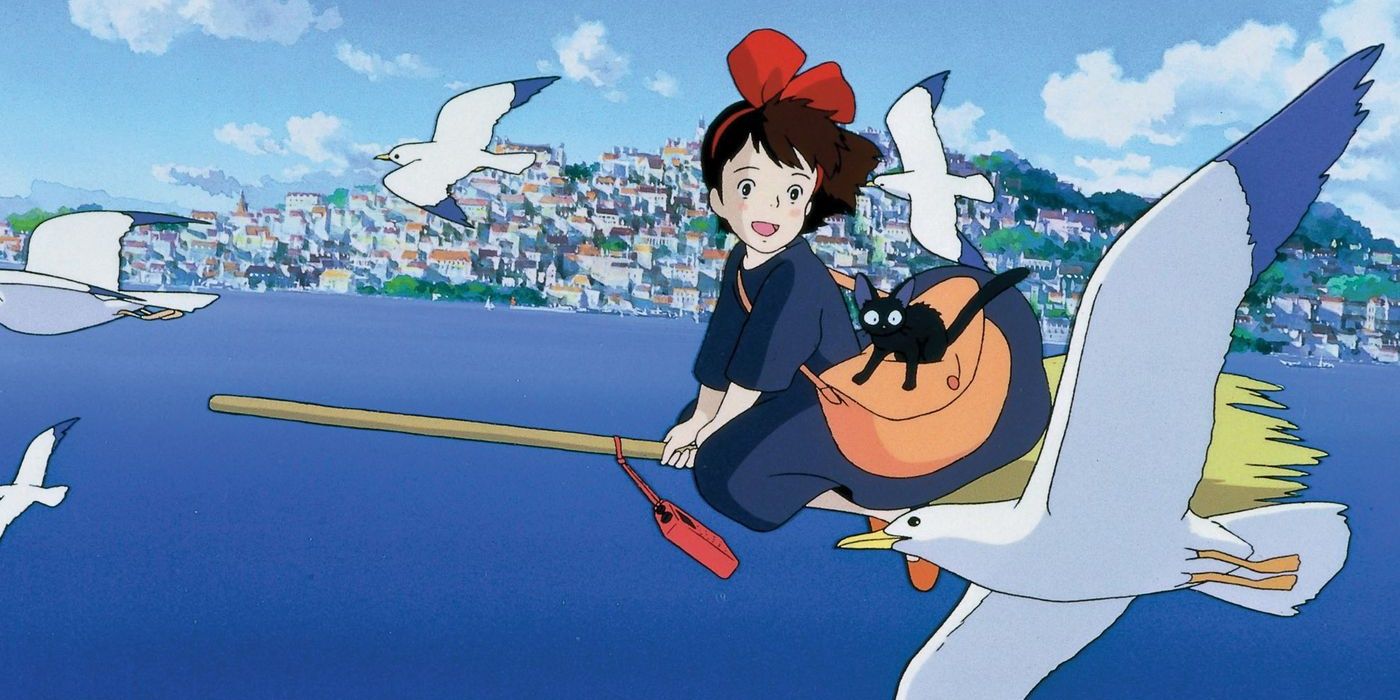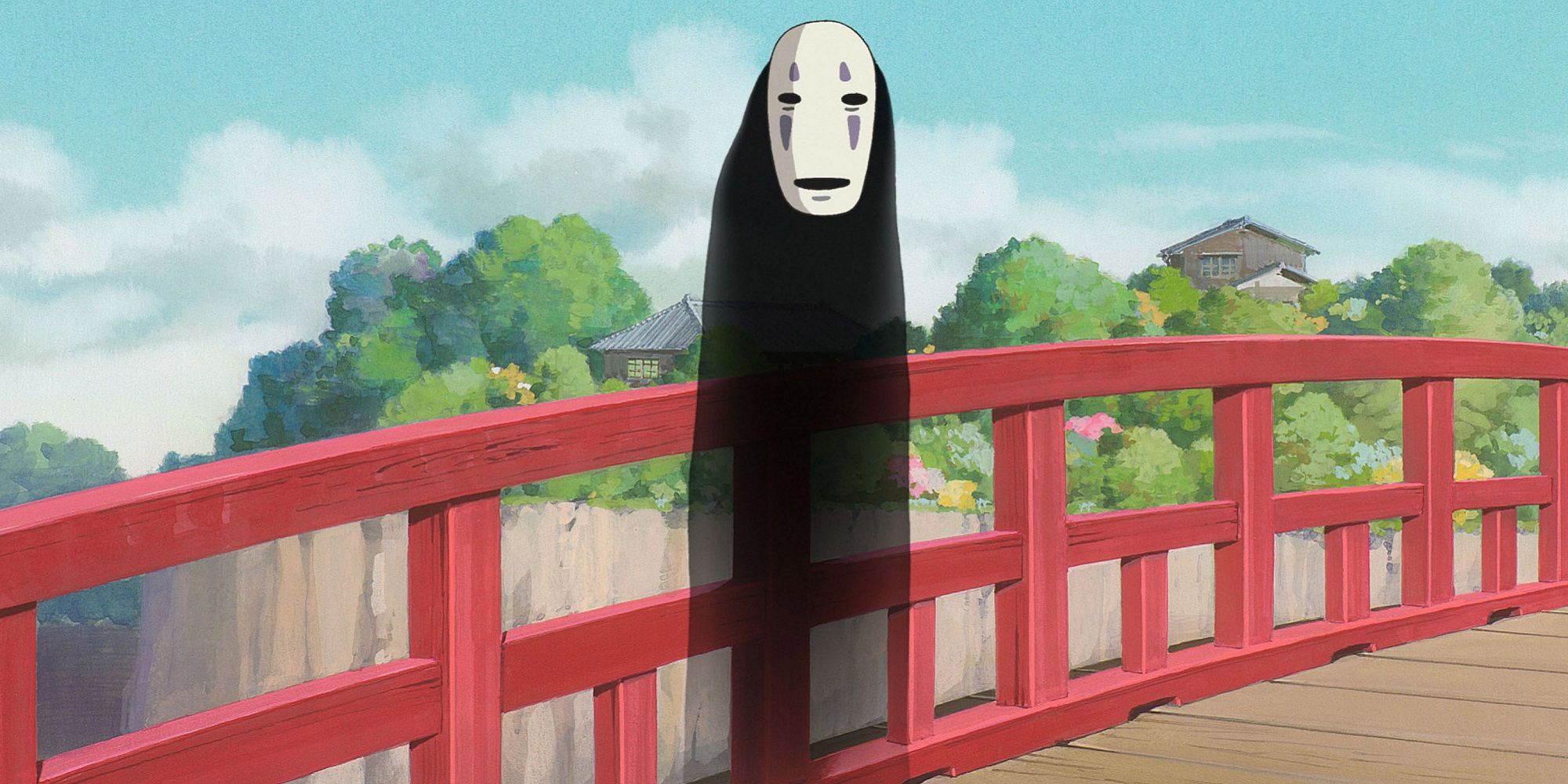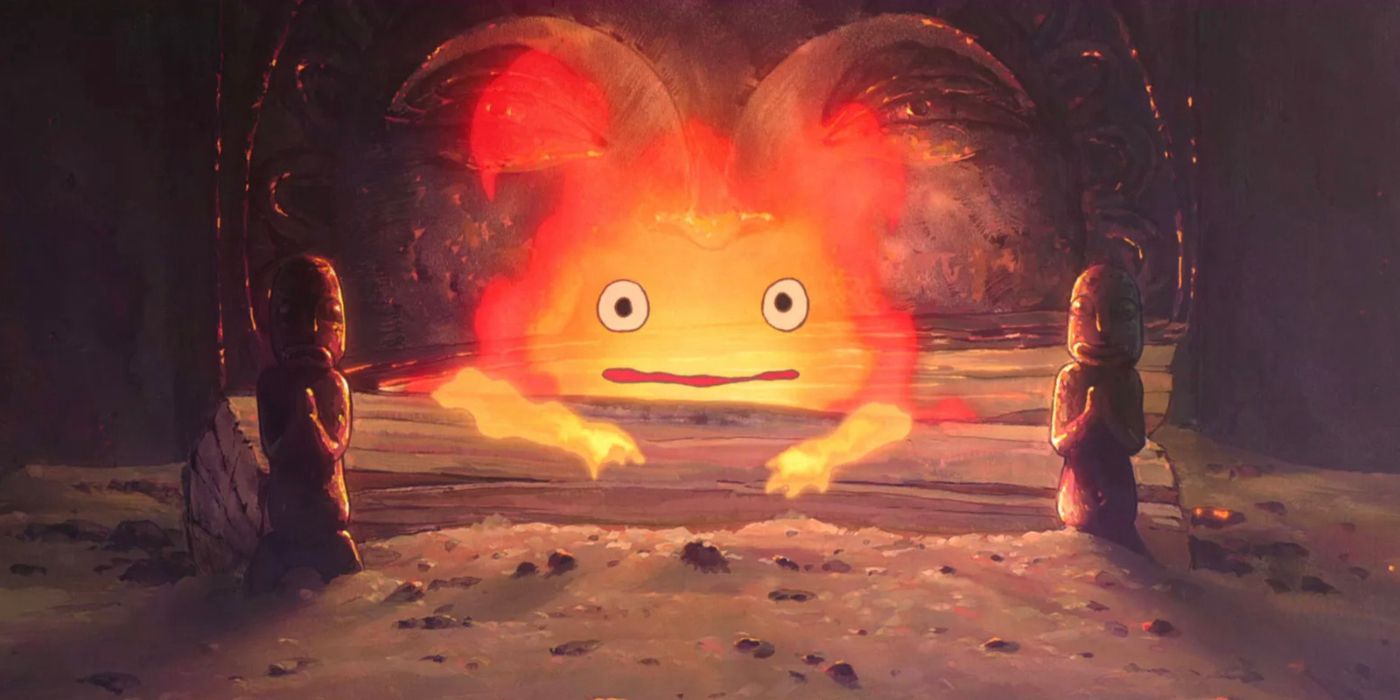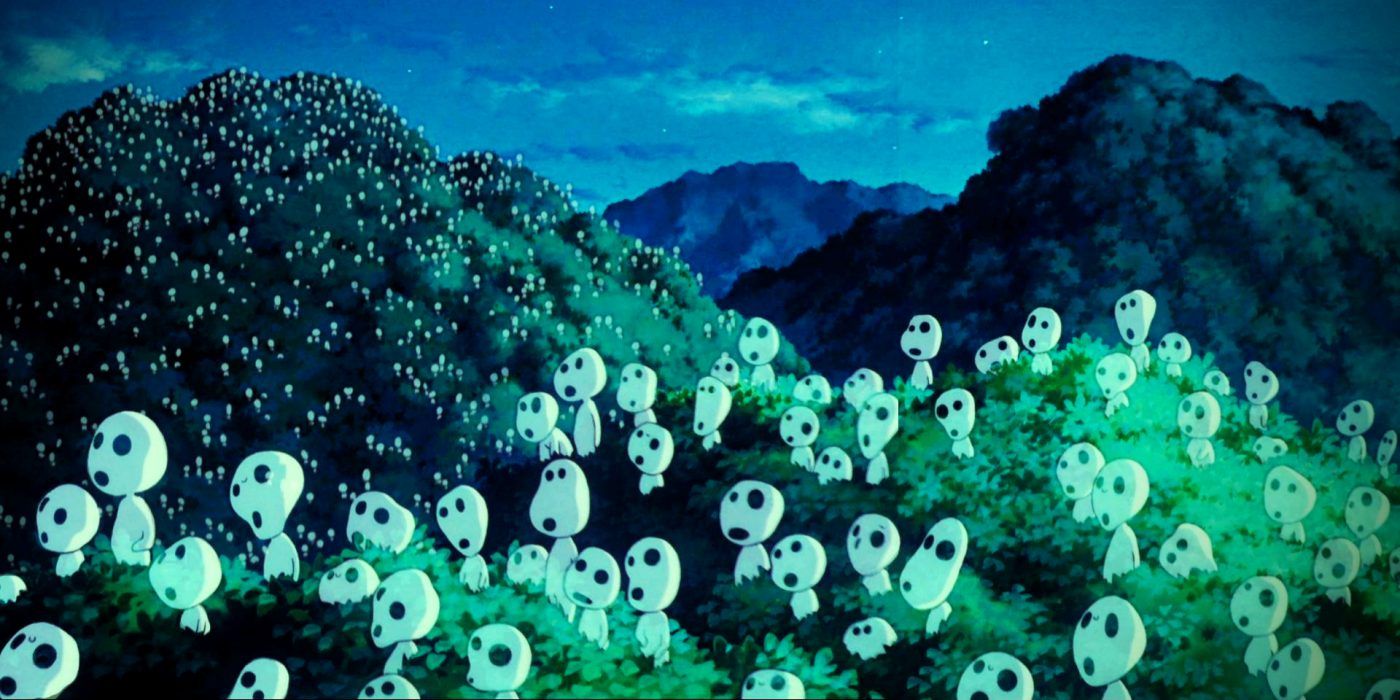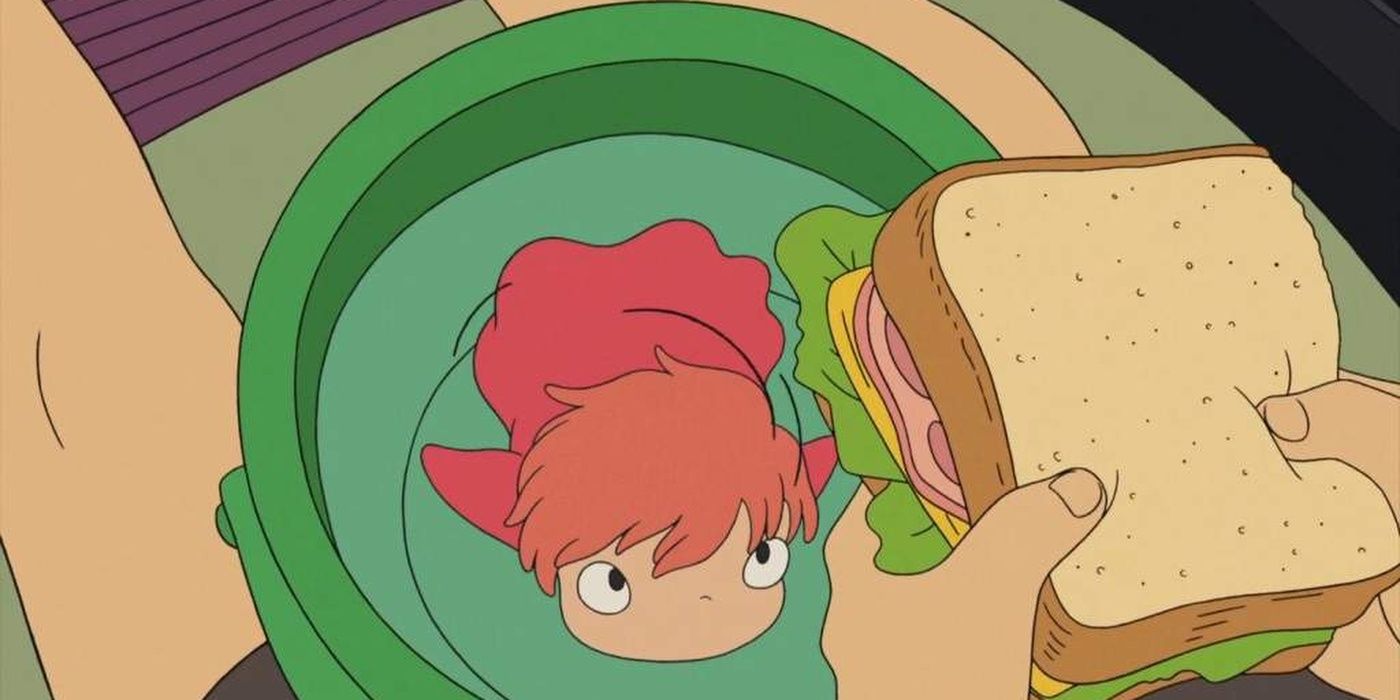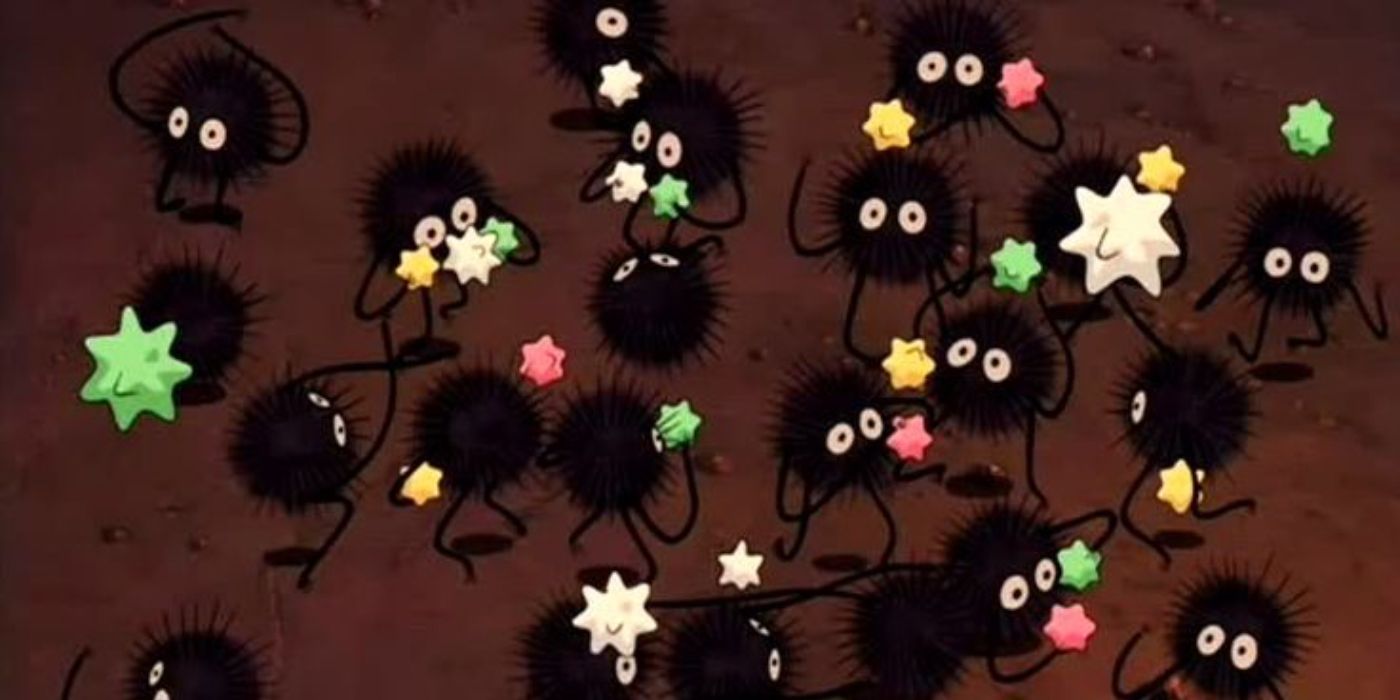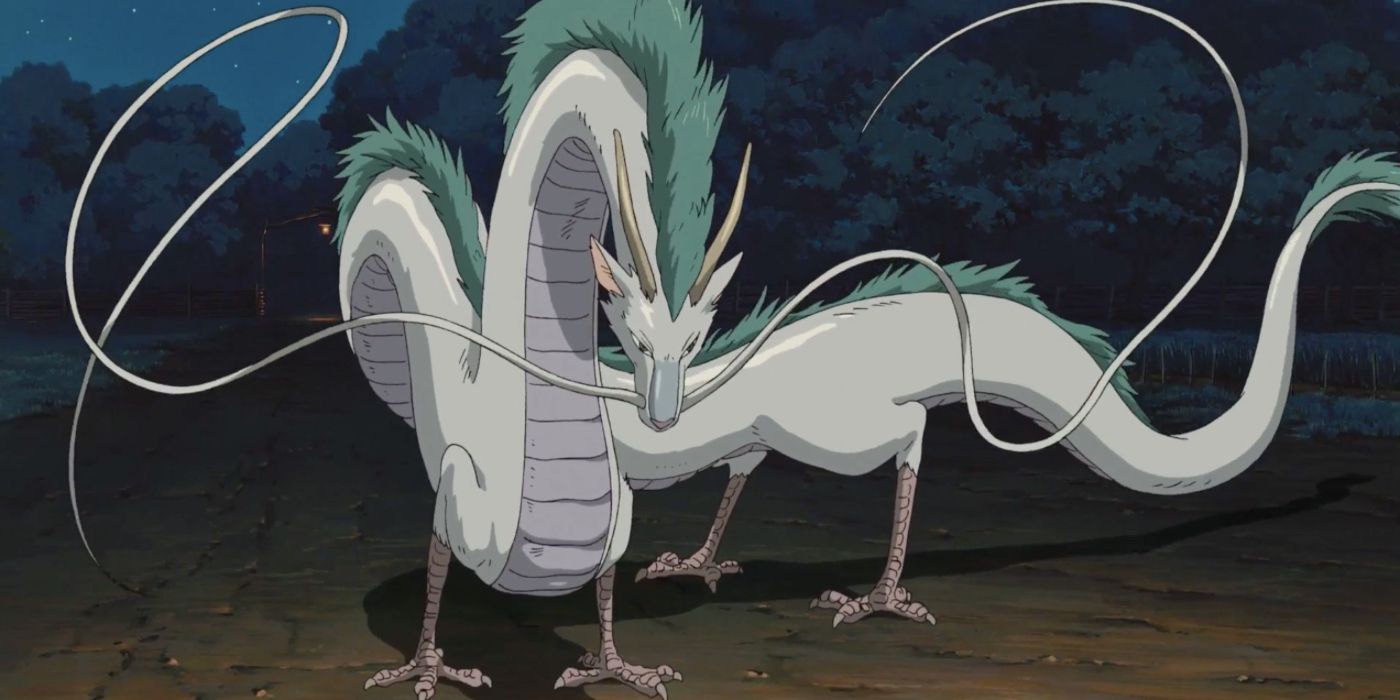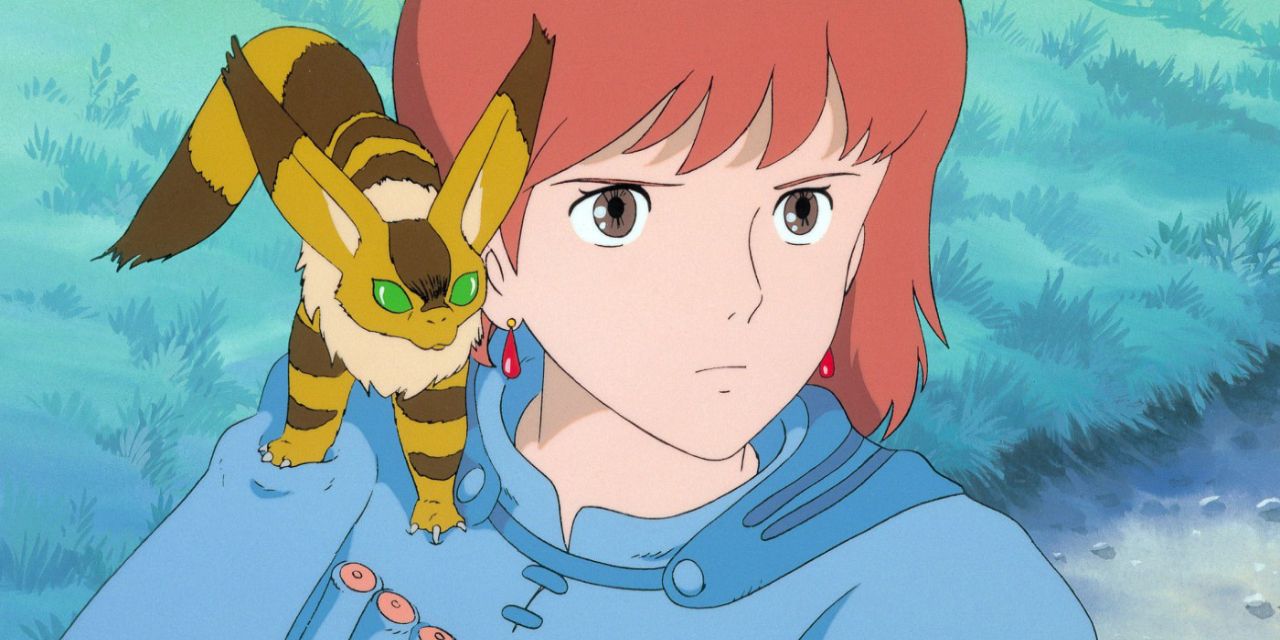While the mostly-human protagonists of Studio Ghibli movies get a lot of attention for their complex stories and endearing personalities, there are a whole host of non-human characters that also charm audiences in the same way.
Whether they're integral to the plot of the movie, sidekicks and companions to the heroes, a hero themselves, or simply part of a film's enchanting world, the varied cast of non-human Ghibli characters make a memorable impact on viewers and help to enrich the stories they appear in.
Updated on June 7, 2022 by Stacie Rook: The Royal Shakespeare Company is preparing to bring the magic of My Neighbor Totoro to the stage in London (via NME), but the great forest spirit is not the only otherworldly wonder to be found in the movies of Studio Ghibli, which are rich in all sorts of non-human characters.
Moro - Princess Mononoke (1997)
Moro the great wolf god is highly important to San's story in Princess Mononoke, with both her protectiveness and her ferocity influencing the kind of person that San grows up to be.
Within the context of Princess Mononoke's story, Moro is an adoptive parent to San, providing San with a deep connection to the natural world she strives to protect and a learned hatred for other humans. Highly intelligent and strong, Moro's later injury at the hands of the Forest Spirit shows just how great a force the Spirit is.
Porco Rosso - Porco Rosso (1992)
The titular protagonist of Porco Rosso, once a human fighter pilot called Marco, was cursed after the events of World War I. After the war ended, Porco Rosso became a bounty hunter tasked with taking down air pirates.
A highly-skilled pilot with a strong sense of duty, Porco Rosso's curse adds new depth to the familiar tale of a heroic figure striking out on his own, and in spite of his flaws, he remains a character that is easy to root for.
Laputian Robots - Castle In The Sky (1986)
The robots found on Laputa in Castle in the Sky showcase the wonder of a lost land. Their extra-long limbs and humanoid features resemble something set apart from humanity yet still recognizable, illustrating the lost history of their civilization.
When Pazu and Sheeta arrive on Laputa, they find only a single robot still functioning, and learn that it is a peaceful gardener that tends to Laputa's wildlife. This is a stark contrast to the ways in which the film's antagonists wish to use the robots, echoing the story's message about how Laputa's resources can and should be used.
Turnip Head - Howl's Moving Castle (2004)
One of several characters in Howl's Moving Castle whose life and appearance are changed by a curse, Turnip Head is a scarecrow who takes an immediate liking to Sophie, following and assisting her in little ways throughout the movie.
Though his motivations are unclear for most of the narrative, Turnip Head is a helpful individual that always tries his best, and when his true identity is revealed to be the missing Prince Justin at the film's conclusion, he immediately sets out to stop the war being fought on his behalf.
The Baron - Whisper Of The Heart (1995) & The Cat Returns (2002)
An anthropomorphic cat who made his debut in an underrated Studio Ghibli movie, Whisper of the Heart, the Baron is a statue who becomes the inspiration for protagonist Shizuku's novel. His scenes were so popular upon the movie's release that it resulted in The Cat Returns, a movie in which the Baron is one of its main characters.
The Baron's full name, Baron Humbert von Gikkingen, is a nod to his German origins in Whisper of the Heart, and the character's charismatic personality makes him entertaining to watch. His commitment to helping Haru in The Cat Returns contributes to the fairytale-like quality of the story and adds to the Baron's overall likability.
Totoro - My Neighbor Totoro (1988)
An iconic character that has come to symbolize Studio Ghibli as a whole after appearing on the company's logo, Totoro — introduced in My Neighbor Totoro — is a large forest spirit who lives in an ancient Camphor Tree. He is often followed around by two smaller Totoros, Chu Totoro and Chibi Totoro.
Totoro's actions over the course of the movie, befriending and assisting young sisters Mei and Satsuki, have endeared him to audiences worldwide. His curiosity and considerations of the natural world enforce the movie's themes, giving the young girls a direct connection to the spiritualism of their environment.
Jiji - Kiki's Delivery Service (1989)
As a sidekick to Kiki's Delivery Service's titular protagonist, Jiji the black cat accompanies Kiki on her adventures to another town as part of her witch training. Upon settling into their new home, he also finds a new companion in the form of a white cat named Lily.
Jiji acts as a familiar piece of home for Kiki in an uncertain new stage of her life, providing sarcastic remarks and trying to raise her spirits when she becomes unsure of herself. Interestingly, Jiji's personality in the movie's original Japanese version is very different from his dubbed counterpart, instead appearing as a far more humble and cautious companion. In both appearances, though, his fondness and loyalty for Kiki remain the same.
No-Face/Kaonashi - Spirited Away (2001)
One of the spirits who inhabits the world Chihiro finds herself in during Spirited Away, No-Face (also known as Kaonashi) is a curious and lonely spirit who causes havoc in Yubaba's bathhouse after absorbing the greed and corruption of those he comes into contact with.
Given that many of his actions are motivated by a wish to please Chihiro, No-Face's misguided deeds still manage to be somewhat endearing, even when they involve engulfing other spirits (helped by the fact that this doesn't turn out to be permanent). He's also shown to be highly intuitive, and he finds a calm life with Zeniba at the end of the movie.
Calcifer - Howl's Moving Castle (2004)
A powerful fire demon and former falling star, Calcifer made a deal with Howl prior to the events of Howl's Moving Castle. Taking on Howl's heart, Calcifer keeps the castle running and heated from the confines of the hearth.
Speaking some of the most memorable Howl's Moving Castle quotes, Calcifer has a surprisingly sensitive side, despite the menacing facade he sometimes puts forth to uphold his demonic reputation. His contrasting dynamics with Sophie and Howl are delightful in their own ways, from Sophie's dismissal of his evil ways to his and Howl's history, but both enrich the story and the lore of the world.
The Kodama - Princess Mononoke (1997)
While the Kodama from Princess Mononoke are some of the movie's more minor spirits, their presence within the narrative is nonetheless an important one, as the creatures act as an indicator of whether or not the forest is a healthy environment.
At the end of the movie, the return of a single Kodama after their decimation heralds the promise of the natural world recovering after their land is healed. The Kodamas are also a striking visual, and the clicking noises they make only add to their ethereal nature.
Ponyo - Ponyo (2008)
One of Studio Ghibli's most likable characters, the titular protagonist of Ponyo is a goldfish who gains the ability to turn into a little girl. She has a great love for ham, and the new human friend she makes on land, Sōsuke.
Ponyo's wonder for the little things and her journey to become fully human have audiences rooting for her throughout the story as she battles against the consequences her desires have on the world. Her sweetness and determination are heartwarming, as are the connections she makes with Sōsuke and his mother.
Soot Sprites - My Neighbor Totoro (1988) & Spirited Away (2001)
Also known as Susuwatari, Studio Ghibli's soot sprites debuted in My Neighbor Totoro, living in the shadows of Mei and Satsuki's new family home at the start of the movie. They later also appeared in Spirited Away, carrying coal to help stoke the fires of the bathhouse where they are befriended by Chihiro.
The soot sprites eat konpeitō, a brightly colored Japanese sugar candy, and are shown to be full of personality, as seen both when they are fed, and in that they are happy to let Chihiro do their work for them. Their simple yet distinctive design also makes these sprites hard to forget.
Haku - Spirited Away (2001)
Spirited Away's co-protagonist Haku helps Chihiro a lot over the course of the movie, though he does keep some secrets. Although he initially appears to be human, Haku is later revealed to be the river spirit of the Kohaku River, with the ability to take on a magnificent dragon form.
Even in his human form, though, Haku has one of the most iconic Studio Ghibli looks, a contributing factor in addition to his interactions with Chihiro that make him such a well-loved character.
Teto - Nausicaä Of The Valley Of The Wind (1984)
Teto is a fox-squirrel that becomes Nausicaä's pet in Nausicaä of the Valley of the Wind after he's been found and rescued by Yupa. Though at first he is wary of Nausicaä, even biting her finger out of fear when they first meet, he soon becomes her loyal companion after she shows him he has nothing to be frightened of with her.
Teto's presence shows Nausicaä's constant consideration for animals and the natural world, and though as a character he doesn't have too much of an individual story, his presence helps solidify Nausicaä's personality and assists in the movie's worldbuilding.

